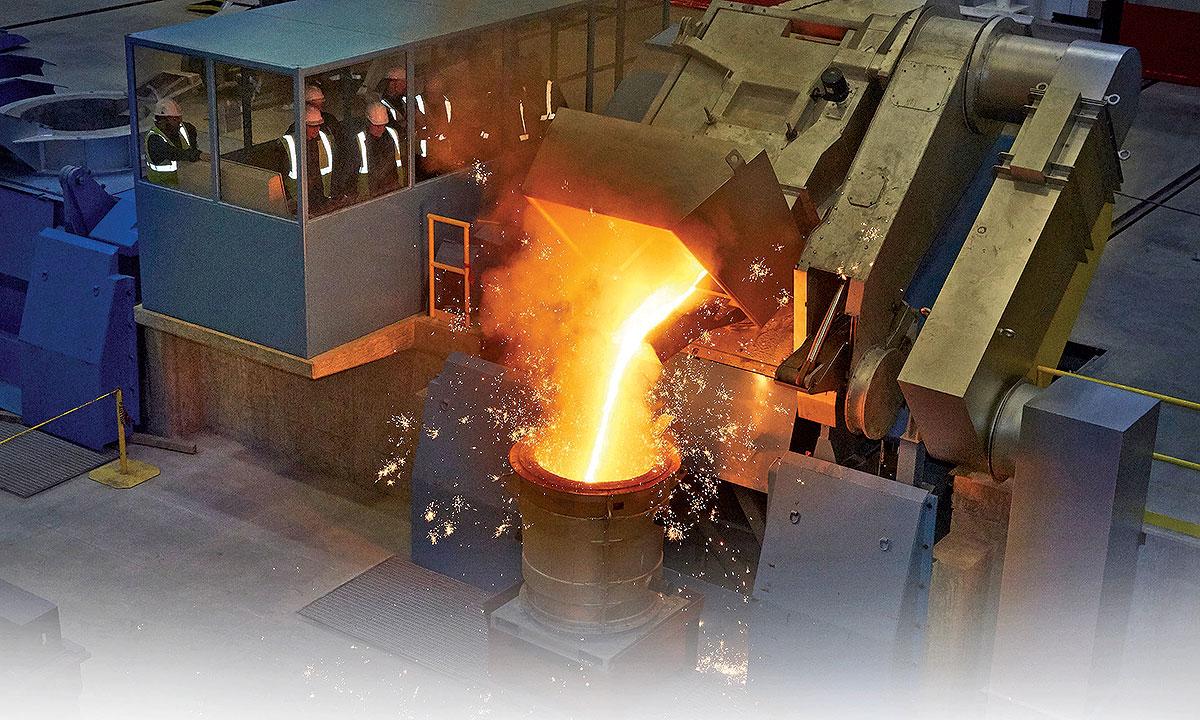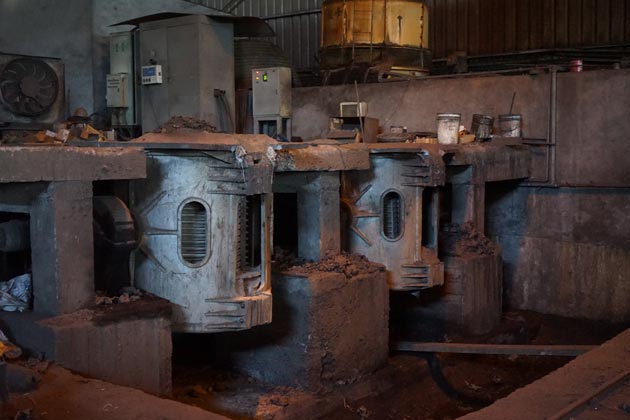Exploring the different types of Metal Casting methods used today
Discover the Cutting-edge Methods Made Use Of in a Metal Foundry for Superior Casting Outcomes
In today's competitive production landscape, metal foundries are increasingly embracing cutting-edge methods to enhance spreading results - Aluminum Foundry. Advanced computer system simulations permit accurate modeling of molten metal habits, while 3D printing enables fast production of complex molds. In addition, environment-friendly products and automation streamline operations. These growths guarantee significant renovations in efficiency and quality assurance. The effect of these technologies on sustainability and manufacturing techniques remains to be completely discovered.
Advanced Computer Simulations in Metal Casting
Advanced computer system simulations have revolutionized the metal spreading procedure by boosting precision and effectiveness. These sophisticated devices allow designers to create virtual models of cast elements, enabling them to examine and forecast the actions of molten metal throughout the spreading stage. By replicating different specifications such as temperature, circulation rate, and cooling rates, suppliers can determine prospective problems prior to physical manufacturing begins.
This proactive strategy minimizes waste and reduces costly errors, inevitably bring about enhanced product top quality. Furthermore, simulations facilitate the optimization of mold and mildew designs, guaranteeing that they fulfill the certain needs of each task. The combination of computational fluid dynamics (CFD) and limited element evaluation (FEA) further adds to the accuracy of these simulations, offering understandings that were previously unattainable. Consequently, advanced computer system simulations have actually ended up being a vital component of contemporary metal foundries, significantly progressing the market's abilities.
3D Printing for Mold And Mildews and Patterns
3D printing has actually arised as a groundbreaking strategy for developing molds and patterns in the metal foundry sector. This innovation makes it possible for the rapid production of intricate geometries that traditional manufacturing approaches struggle to attain. By making use of additive manufacturing, foundries can create elaborate styles with reduced preparations and product waste. The capacity to generate mold and mildews as needed enables for higher adaptability in design iterations, facilitating faster prototyping and alterations.
3D printing can make use of a variety of materials, including metals and plastics, customized to particular casting needs. This flexibility improves the accuracy of mold and mildews, resulting in premium casting outcomes with boosted surface finishes. Additionally, the reduction in the number of components needed simplifies setting up procedures, further optimizing production efficiency. As foundries remain to adopt 3D printing, they are poised to redefine industry standards, leading the way for advancement and boosted performance in metal casting operations.
Eco-Friendly Materials and Processes
As the metal foundry industry encounters boosting stress to decrease its environmental footprint, the fostering of eco-friendly materials and processes has come to be essential. Factories are now discovering lasting choices to typical products, such as making use of bio-based binders and recycled metals. These materials not only decrease waste yet likewise lower power usage throughout production.
Furthermore, advancements in sand casting methods have actually resulted in the usage of artificial sands that are less harmful to the setting. Shops are likewise implementing ingenious procedures like liquified metal therapy that decreases exhausts and improves the quality of actors items.
Water-based coverings have actually replaced hazardous solvents, promoting a safer job environment. By incorporating these green practices, metal foundries can markedly lower their ecological influence while preserving high-grade spreading outcomes. This shift not only benefits the environment yet also lines up with the expanding customer need for lasting production services
Automation and Robotics in Foundry Workflow
While the metal foundry sector embraces technology, the assimilation of automation and robotics is changing operations significantly. Automated systems simplify procedures such as mold making, metal pouring, and casting ending up, substantially enhancing effectiveness. Robotics assist in the handling of hefty products, reducing the danger of work environment injuries and ensuring more secure atmospheres.

Additionally, using automated guided vehicles (AGVs) maximizes product transport within facilities, guaranteeing timely distribution of components to ideal workstations. By applying these technologies, foundries can adjust to varying demands with better agility, inevitably resulting in boosted earnings and competitiveness in the market. As automation and robotics remain to develop, they hold the possible to redefine typical foundry methods and drive further improvements in casting strategies.
Real-Time Monitoring and High Quality Control Techniques
The improvements in automation find here and robotics have actually led the way for a lot more advanced strategies to top quality assurance in metal foundries. Real-time monitoring systems use sophisticated sensing units and information analytics to track vital parameters throughout the casting procedure. These systems continuously analyze variables such as stress, product, and temperature structure, allowing prompt detection of inconsistencies from developed standards.
Quality assurance techniques currently integrate maker discovering formulas that analyze historical data to anticipate possible problems before they occur. This aggressive technique lessens waste and enhances general production efficiency. Additionally, integrated comments loops allow for quick modifications, guaranteeing that each spreading meets rigid quality needs.
The application of electronic twins-- virtual reproductions of physical properties-- has actually also changed quality control, enabling designers to replicate and enhance processes in real-time. Together, these innovative techniques greatly enhance the integrity and quality of spreadings, establishing new sector criteria in metal foundry operations.
Frequently Asked Questions
What Types of Metals Are Commonly Cast in Factories?
Typically cast metals in foundries consist of aluminum, brass, bronze, and iron. Each metal displays one-of-a-kind residential properties, making them suitable for numerous applications, such as automobile components, equipment, and advice artistic sculptures, enhancing their convenience in production.

The length of time Does the Casting Process Normally Take?
The casting process usually takes numerous hours to days, relying on variables such as the complexity of the mold, kind of metal utilized, and cooling demands. Each phase influences the general duration considerably.
What Precaution Are in Area for Foundry Workers?

Exactly how Are Flaws in Castings Identified and Addressed?
Flaws in spreadings are determined with visual evaluations and non-destructive testing methods. When found, foundry employees resolve them by improving procedures, changing material make-ups, and carrying out restorative steps to guarantee quality and conformity with requirements.
What Is the Cost Range for Metal Casting Providers?
The expense variety for metal casting solutions typically ranges $1 to $10 per extra pound, depending on variables such as material kind, complexity of the style, and production quantity, affecting overall prices substantially.
In today's affordable production landscape, metal foundries are increasingly taking on ingenious strategies to improve casting outcomes. As the metal foundry market encounters increasing pressure to lower its environmental footprint, the adoption of environmentally friendly products and processes has actually ended up being essential. Factories are now checking out sustainable options to traditional materials, such as making use of bio-based binders and recycled steels. By integrating these environmentally friendly techniques, metal foundries can substantially decrease their eco-friendly influence while preserving top quality spreading outcomes. The developments in automation and robotics have actually paved the method for much more advanced strategies to top quality guarantee in metal foundries.